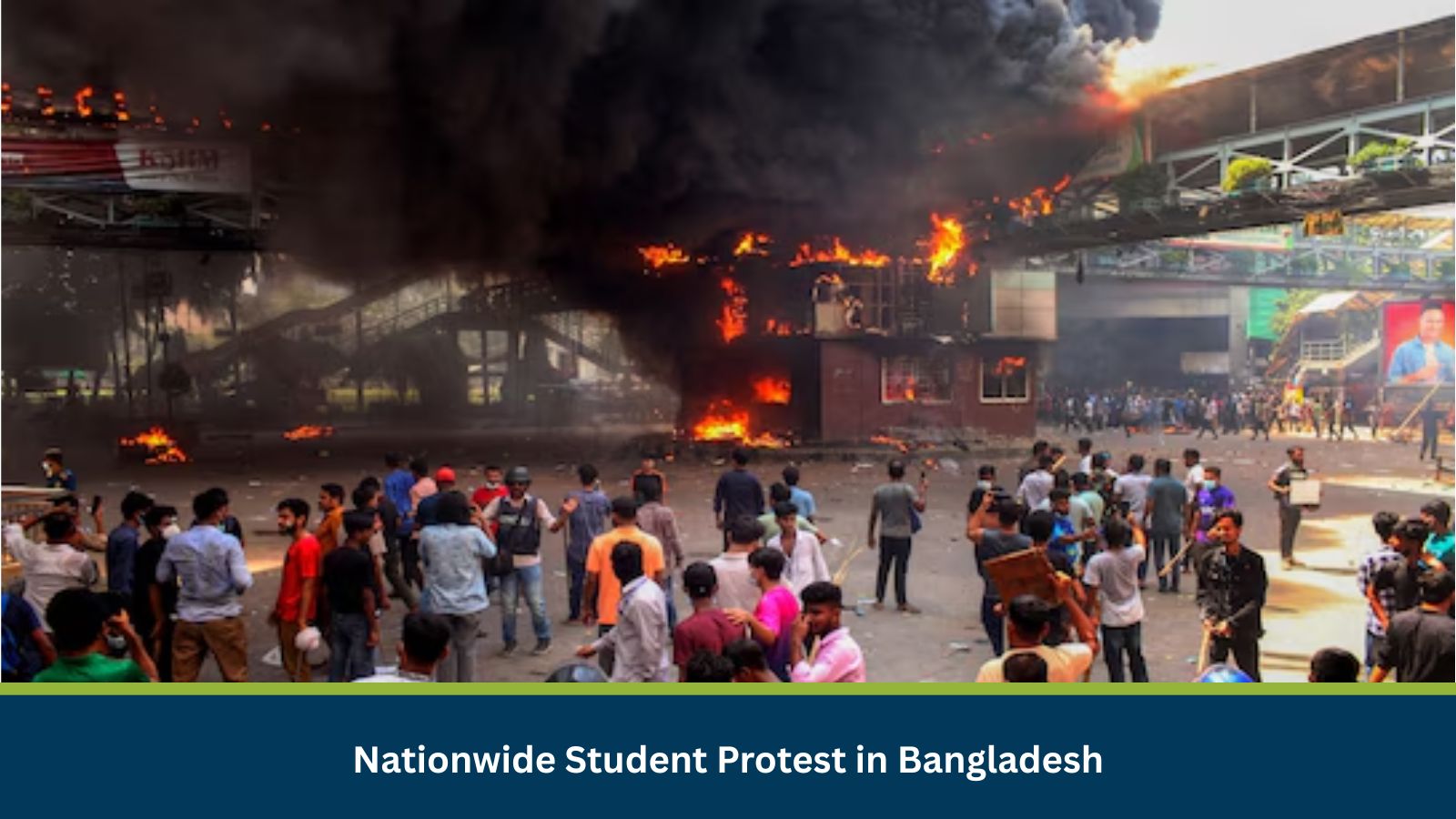This risk assessment evaluates the nationwide student protest in Bangladesh, triggered by a ‘milestone tragedy’ on July 22. It aims to provide insights for businesses to manage potential disruptions to urban mobility, business continuity, and people’s safety, particularly in key metropolitan areas like Dhaka and Chittagong.
What is Risk Analysis in the Context of Civil Disturbance Events?
Civil disturbance risk assessments evaluate how protests and demonstrations impact urban mobility, workplace safety, supply chains, and public services. They enable businesses to prepare for disruptions, mitigate risks to operations, and ensure staff welfare through timely intelligence.
Executive Summary
- Date of Incident: 22 July 2025
- Location: Meghbari, Milestone School and College, Dhaka, Chittagong, Bangladesh
- Risk Category: Civil Disturbance
- Severity Score: 4/5
- Confidence Level: 88%
A nationwide student protest has erupted in Bangladesh on Tuesday, July 22, triggered by a ‘milestone tragedy.’ Historical analysis of similar student-led demonstrations in Bangladesh indicates a high probability of sustained disruption and potential for escalation, especially around university campuses in Dhaka and other major cities. These protests have consistently led to significant public inconvenience, road closures, clashes with authorities, and, in some cases, injuries and fatalities. Given the ‘nationwide’ scope and the emotional catalyst, we forecast a high severity of impact, likely extending for 3 to 7 days, with potential for localized re-escalation. This will primarily impact urban mobility, business continuity, and people’s safety.
Known Hotspots and Sensitive Areas
Key sensitive areas that have historically been sites of student protests and potential flashpoints include the campuses of Dhaka University, Bangladesh University of Engineering and Technology (BUET), Jagannath University, and various private universities across Dhaka and Chittagong. Additionally, major government buildings and political party offices often become areas of heightened security.
Impact on Transportation and Services
- Road Closures: Historically, major arteries in Dhaka are frequent targets for road closures during student protests. Specific examples include the Shahbagh intersection, Mirpur Road, areas around Farmgate, and roads leading to Dhaka University, BUET, and Jagannath University.
- Transport Disruption: Nationwide student protests invariably lead to severe transport disruptions. Public bus services, rickshaws, and private vehicles are heavily impacted by road closures and blockades, especially in urban centers. Inter-district bus services can be halted or severely delayed, affecting travel across the country.
- Utility Damage: While not a primary target, localized utility damage, such as vandalized streetlights, traffic signals, or minor disruptions to local power lines near intense protest sites, can occur during confrontations. Major, widespread utility outages directly caused by student protests are less common.
- Business Operations: Widespread protests lead to forced closures of businesses, reduced foot traffic, and absenteeism due to mobility restrictions, significantly impacting daily operations.
Recommended Actions
- Prioritize Employee Safety & Mobility: Immediately activate remote work protocols for all non-essential personnel. For essential on-site staff, HR and Security must coordinate real-time threat assessments, provide updated safe routes, and consider staggered shifts or temporary accommodation.
- Activate Supply Chain & Logistics Contingency: Operations must proactively reroute inbound and outbound shipments to avoid protest-affected areas, utilizing alternative transport modes or distribution hubs. Coordinate with logistics partners for holding inventory in secure off-site locations.
- Ensure Business Continuity & Asset Protection: Activate relevant sections of the Business Continuity Plan (BCP), ensuring remote access to core systems and diverting customer service inquiries. Security teams should enhance physical security measures for all company facilities and assets.
- Maintain Stakeholder Communication & Intelligence: Establish a dedicated internal communication channel to provide employees with real-time safety advisories and operational updates. Externally, proactively inform clients and critical stakeholders about potential service delays or revised operating hours via official channels.
Emergency Contacts
- Police: 999
- Fire Department: 999
- Ambulance: 999
- National Emergency: 999
- Official Government Channels:
- Bangladesh Police: 999
- Dhaka Metropolitan Police (DMP): +8802223380000
Final Thoughts
The baseline scenario anticipates protests remaining localized to campuses and major intersections, with temporary road blockades and minor business disruptions. A moderate escalation could see protests intensify and spread to broader urban centers, involving clashes and prolonged road blockades, significantly impacting regional supply chains. In a severe escalation, widespread and sustained violence could erupt across multiple cities, leading to major asset damage, critical employee safety concerns, and severe economic losses. Businesses must prioritize employee safety, implement robust business continuity plans, and maintain constant communication to navigate this dynamic and potentially volatile situation.
Stay ahead of operational risks with real-time alerts, scenario modeling, and expert advisories.
MitKat helps organisations navigate uncertain times by providing comprehensive insights about the evolving risk landscape. We offer various services including Risk consulting and Security Design, Protective Services, and cyber security services which ensure organisations become Risk Intelligent. Our AI-powered operational risk monitoring tool, datasurfr combined with expert insight enables companies to stay abreast of evolving operational risks and emerging developments.






